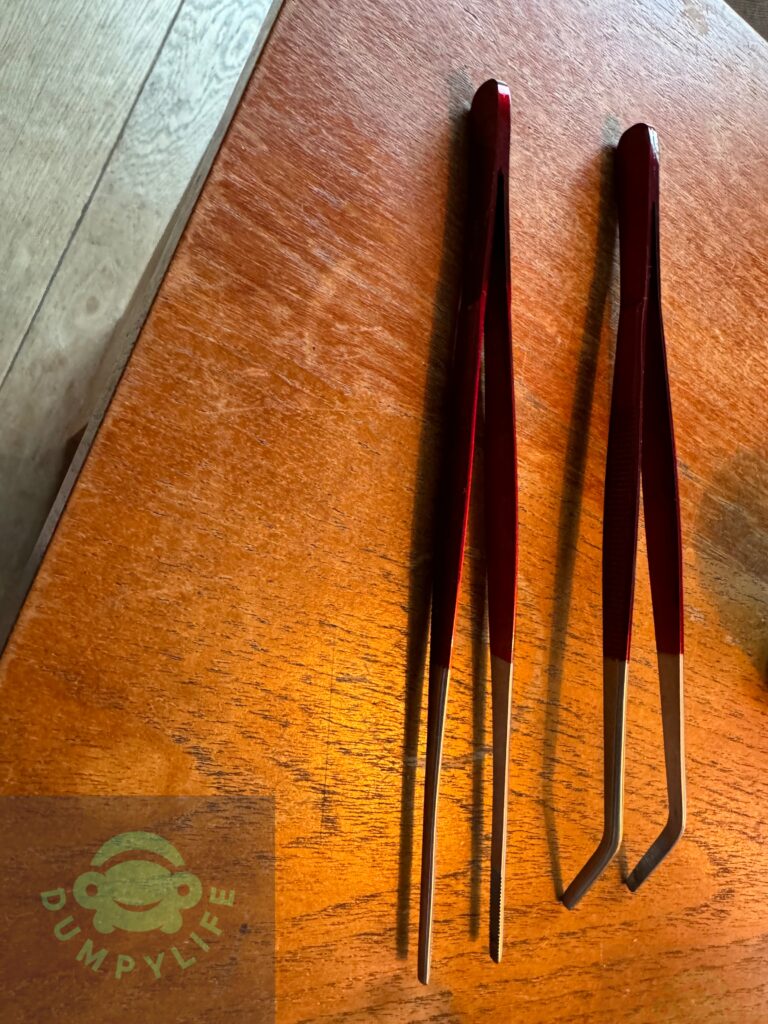Your cart is currently empty!
Nutrition for Dumpy frogs; a short summary of what we feed our frogs
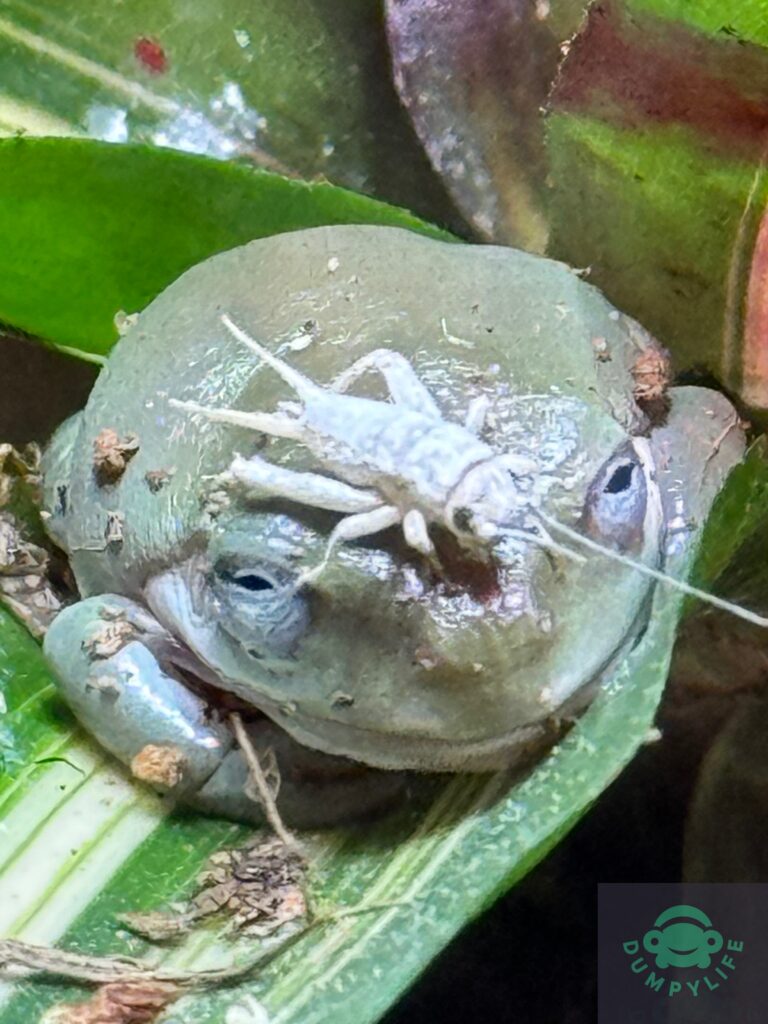
In order to offer the frogs as much of a balanced diet as possible, it is important to vary. So what exactly is the best Nutrition for Dumpy frogs?
The basis is the house cricket. They like it and enjoy hunting it. Because it is important that the frogs also get enough calcium and vitamins, this must be added to the diet. This can be done with powder that you can put in a cup, add a few crickets, shake until the crickets are white and then eat!
We also give the crickets ”Bugburgers”. This is complete food for insects that makes them healthier for the frogs. These are full of extra vitamins and minerals.
We always have the following food products in stock at home:
- House crickets (pay attention to the size! They can eat anything that fits between the frogs’ eyes. When you buy them, the frogs are still very small).
- Bug burgers
- Calcium and vitamin powder amphibians.
- Fruit flies
- Buffalo worms
- Woodlice
- Springtails
The nutritional value per 100 grams of the house cricket is not bad. It consists of:
- 4.8% crude ash (essential minerals for healthy development)
- 69.1% crude protein (supports growth and tissue repair).
- 18.5% fats (provides energy and helps with the absorption of vitamins).
- 7.7% crude fiber (promotes good digestion)
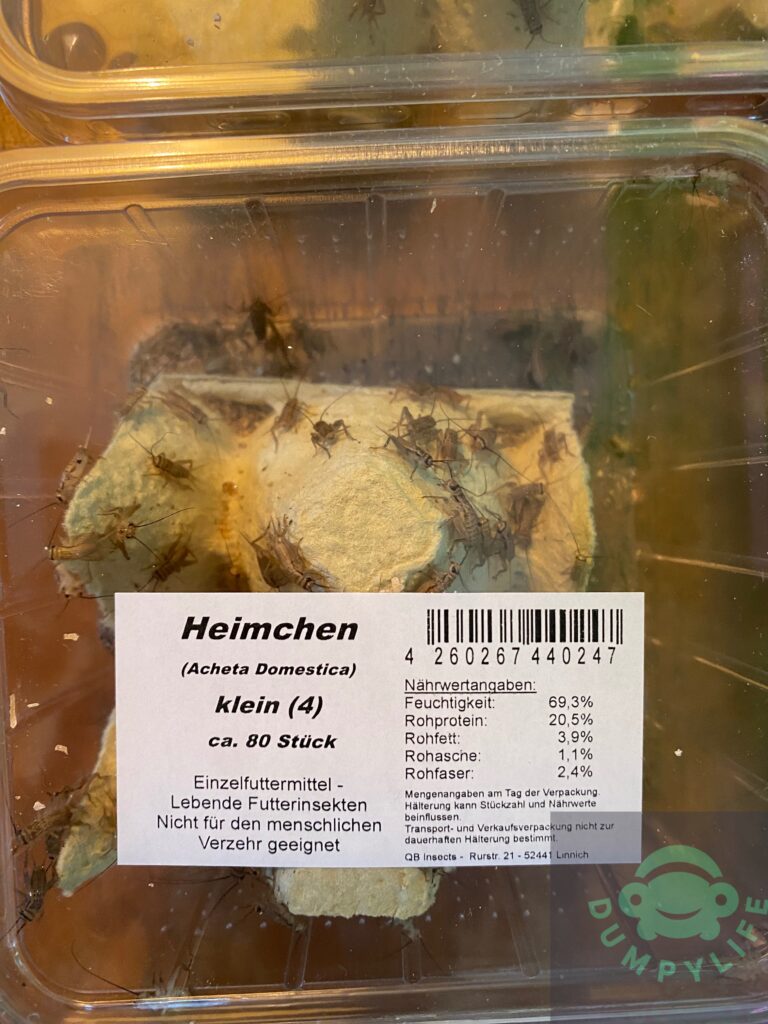
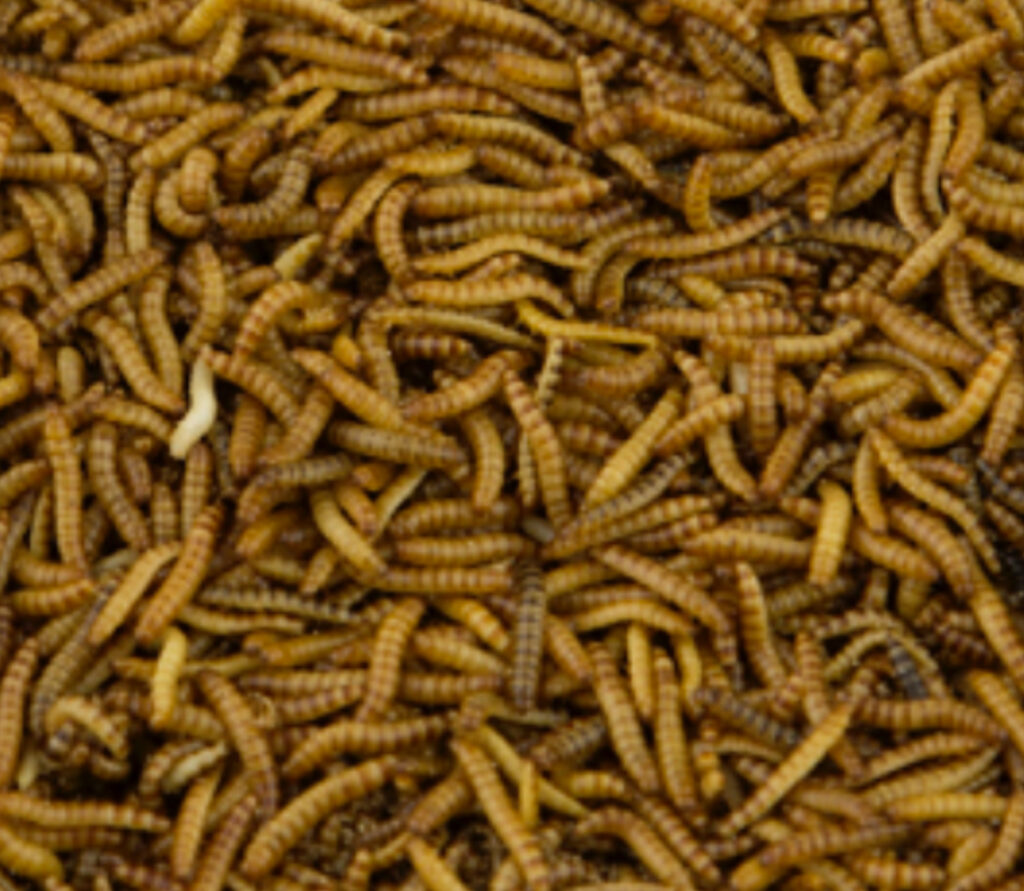
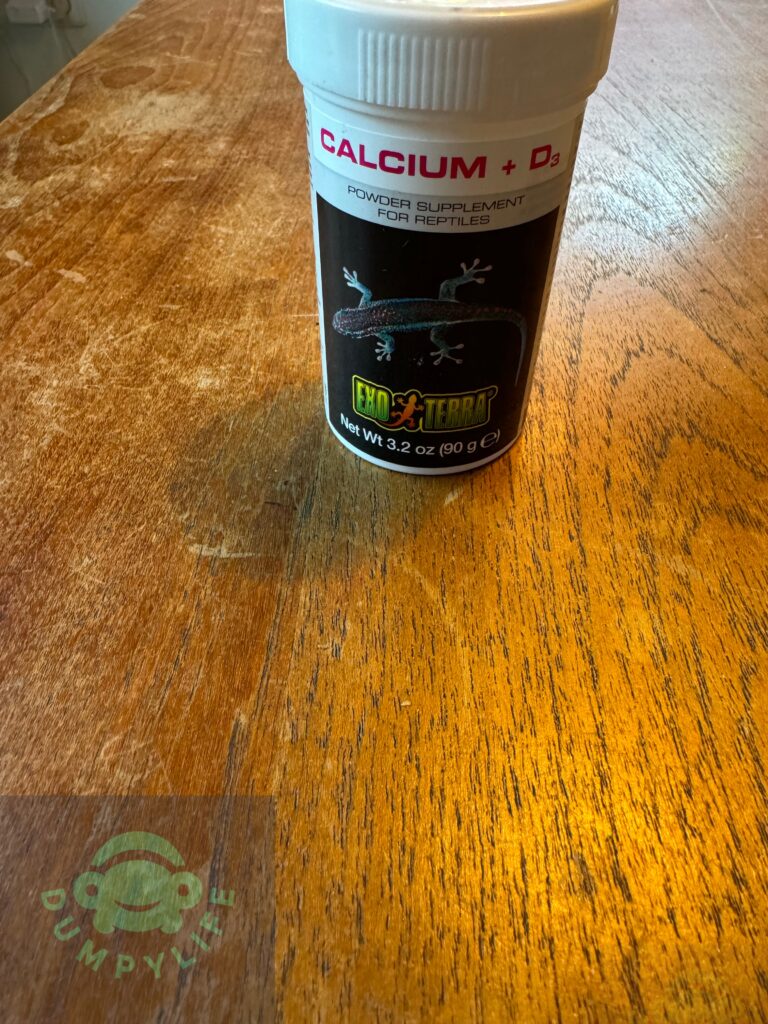
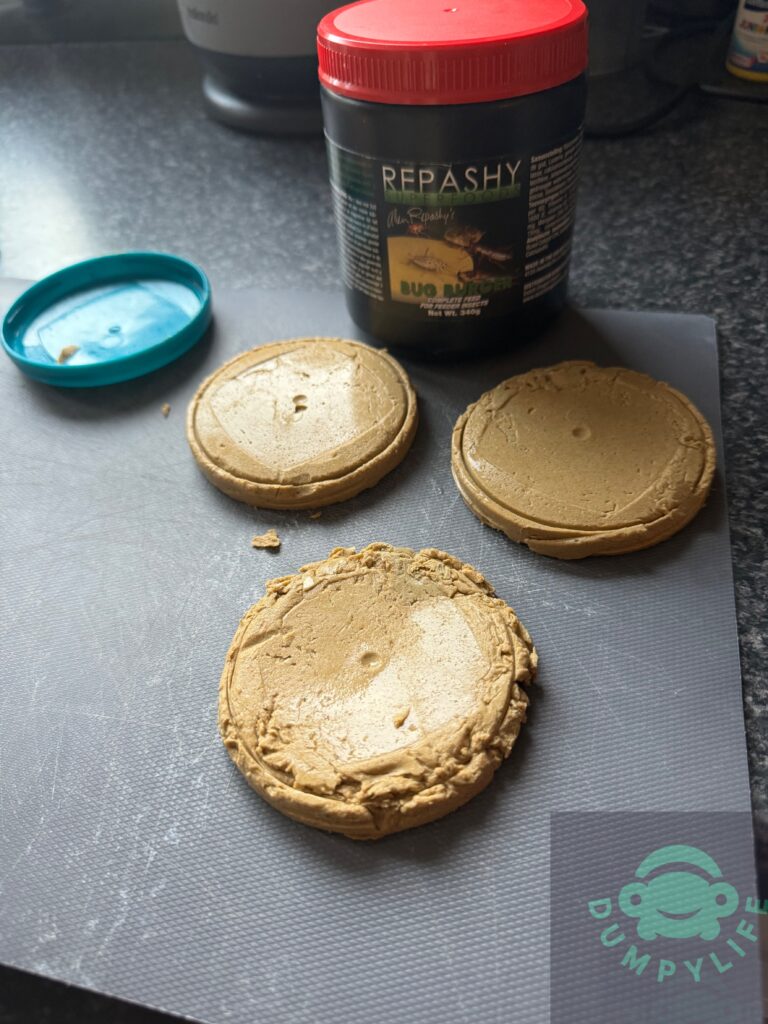

A young frog needs to be fed every day. An adult frog needs to be fed every other day. For variety, you can choose to release a few fruit flies in the paludarium. These are small snacks and this way they don’t get bored quickly in the evenings. Unfortunately, this is always the case with fruit flies; no matter how careful you are, a few will always escape.
At many pet shops you can place a weekly order with live food. This often works easiest. You can also choose to breed crickets yourself. I am currently doing research into whether this is profitable for my own use or whether it is simply not worth the effort.
In order to remain disciplined in feeding, we use a weekly feeding schedule. This way we know exactly what goes into all the frogs. Because worms are very fatty, care must be taken not to eat too much of them. Frogs quickly tend to become overweight in captivity. Always feed in the evenings. This is part of the natural behavior of the frog, as it is a nocturnal animal. We still feed our young frogs every day. When they are adults, this can be done every other day.
Since the frog has a permeable skin, it is wise to touch it as little as possible with your hand. Of course, they can be touched once in a while, but don’t make a habit of it. If it is necessary, wear rubber gloves.
We usually feed them with feeding tweezers. You can also put rubbers on them so that they do not damage their mouths while feeding.
Some frogs like it with tweezers, while others prefer to do it themselves. That is something you have to watch.
